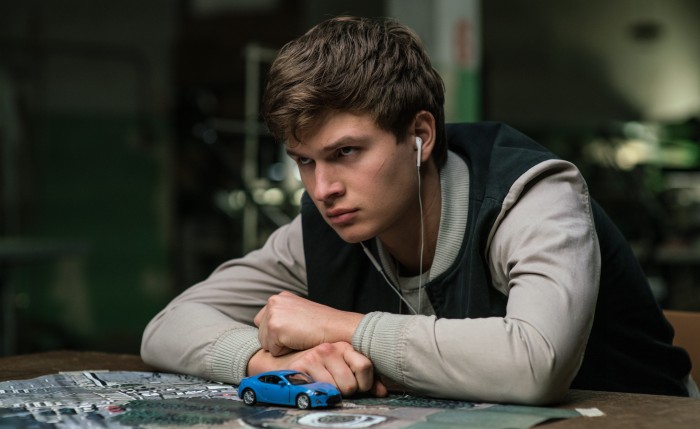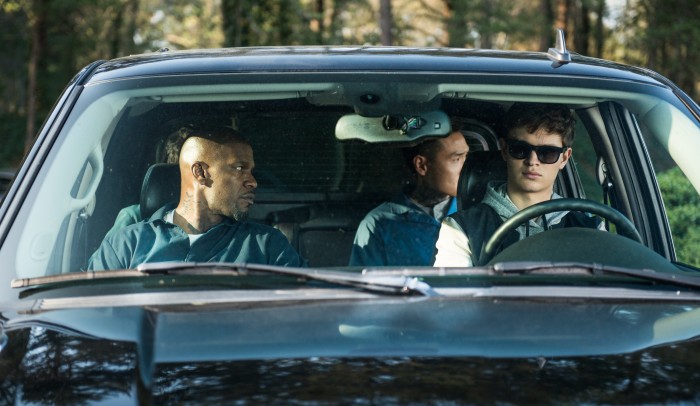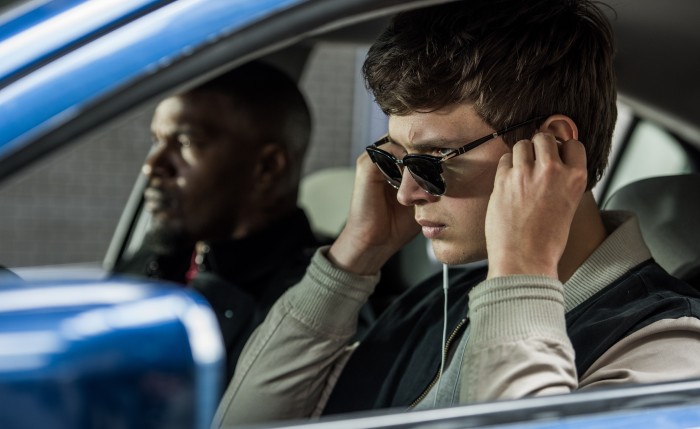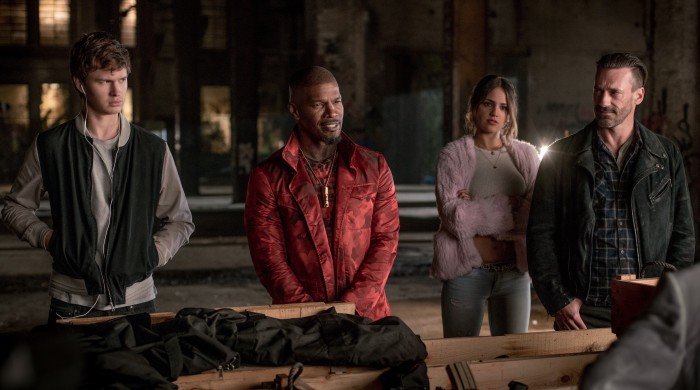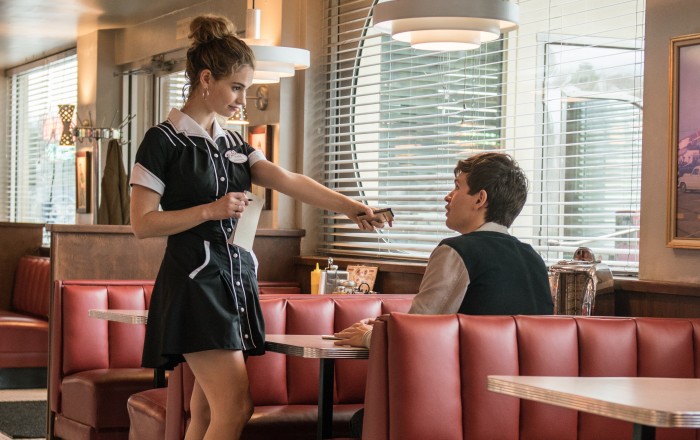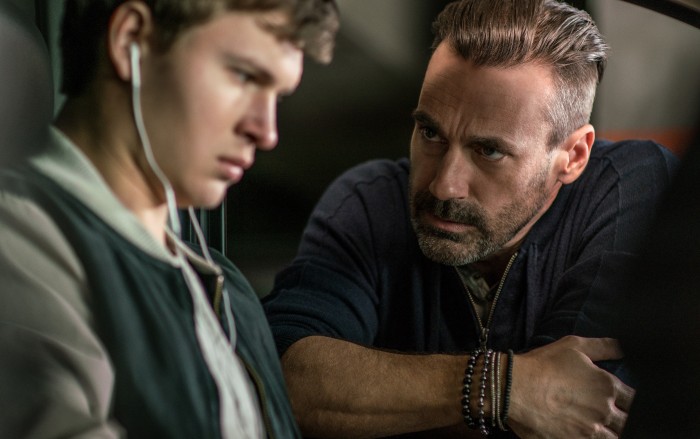Edgar Wright's 'Baby Driver': Everything We Learned On The Set
Baby Driver took SXSW by storm this past March, earning such high praise (it's currently sitting at a perfect 100% on Rotten Tomatoes, with 22 reviews in) that distributor Sony was inspired to bump its release up from a sleepy August weekend to a prime June spot.
But we didn't know any of that was going to happen in April 2016, when the studio invited us to visit the film's Atlanta set. All we knew at that time was that Baby Driver was the new Edgar Wright movie – and considering his track record, that in itself felt like reason enough to get excited. And what we learned on set rocketed the film to the top of our most-anticipated list.
The Long Road to the Big Screen
It was in 2014 that Wright first announced Baby Driver would be his next feature, but the project's history travels much further back than that. In 2003 – before Shaun of the Dead had even hit theaters – Wright shot a music video for the band Mint Royale which featured Noel Fielding as a getaway driver rocking out to music as he waits for a bunch of robbers to complete a heist.
It's not difficult to see Baby Driver's DNA in that video, but it wasn't until 2007 (just after Hot Fuzz) that Wright started working on the script. It almost followed Scott Pilgrim vs. the World in his filmography, until circumstances intervened and pushed The World's End ahead first.
Still, Wright never forgot about Baby Driver and in 2012, he did a table read with several actors – one of whom made it all the way to the final version of the movie. "I think Jon Hamm was the only actor at that read through who is playing the same character he is in the movie," recalled Wright.
Wright told us that the project had evolved "a lot" over the years. "I guess it was more of a concept initially. I sort of knew what I wanted to do tonally and what kind of movie I wanted it to be like, instead of what the general premise was," he said. "It was a nice voyage of discovery in terms of starting to build out the plot and the characters and the twists and things like that."
One thing that remained more or less the same, however, was the soundtrack. "Actually, the music has hardly changed," said producer Nira Park. Which turned out to be pretty helpful when it came time to make the movie. "All the music was cleared a long, long time before we started pre-production," she told us. "Which was the thing, the studio were like, 'How are you going to clear the music?' And we were like, 'We've cleared the music.'"
The Story of Baby
After all his research and revisions, the story Wright wound up with was this (per the official Sony synopsis):
A talented, young getaway driver (Ansel Elgort) relies on the beat of his personal soundtrack to be the best in the game. When he meets the girl of his dreams (Lily James), Baby sees a chance to ditch his criminal life and make a clean getaway. But after being coerced into working for a crime boss (Kevin Spacey), he must face the music when a doomed heist threatens his life, love and freedom.
During our time on set, star Ansel Elgort explained there was a reason for Baby's obsession with music. "Baby has tinnitus," he said. "He was in a car accident when he was seven, and that's probably why he has such a thing with cars. But because he has tinnitus, he has to always listen to music to drown it out."
Baby, Elgort explained, first came to the attention of Doc (Kevin Spacey) when he tried to steal one of his cars. "Doc saw him do it but was just so intrigued by the balls on this kid that he didn't stop him, and then he tracked the kid down and said, 'Okay, well now you owe me so you work for me.'"
However, Baby's ambivalent about his role in the criminal underworld. "He doesn't like the violence at all, but I think he really loves the driving, he really does," said Elgort. When he meets and falls for Deborah (Lily James), he realizes he needs to get out of this line of work before he puts his loved ones in danger. If you've ever seen a crime film, you'll know that's easier said than done.
The Story of Everyone Else
And it's especially difficult for Buddy to get out when he's dealing with characters like these ...
Doc (Kevin Spacey): The Boss. He's the one who pulls Baby into this world, and over time the two of them have developed an odd relationship. "It's almost a little paternal, in the weirdest sense of the world," explained costume designer Courtney Hoffman. "He's steely, he's cold, he's unapproachable to the rest of the world."Bats (Jamie Foxx): The Hothead. "He's sort of like the angry dude," Foxx revealed. "He's killing everybody." Eiza González, who plays Darling (we'll get to her in a bit), described Foxx – and therefore his character – as having a sort of "leadership energy." The other characters "kind of hate him, but love him because he's really good at what he does."Griff (Jon Bernthal): The Muscle. "He's sort of like the last guy you want, but you're glad that he's on your team, not on the others'," Bernthal told us. "He's kind of the guy who's good to have in a pinch, but like, man, he can be annoying. I think he's loud and brash and he does not keep his opinions to himself."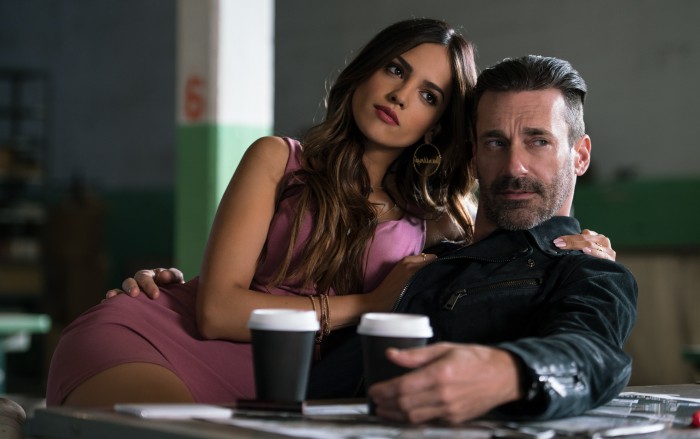 Darling & Buddy (Eiza González & Jon Hamm): Bonnie & Clyde. They're dangerously codependent, but also very competent – in part because they balance each other out. "Her character's so carefree and fun-loving and mine's a little more serious and intellectual, so that's a good combination," said Hamm. Added González: "It's, in a dark way, very beautiful to see that relationship because there's a lot of love and passion in between them."JD (Lanny Joon): The Newbie. JD's specialty is home invasions, so he's new to the world of bank heists – and he's very much out of his element. "I'm that guy who is just always trying to play catch up the entire time," he said. "This is his first time playing with the big boys so once you watch the movie you'll realize he's not quite up the par just yet."Eddie (Flea): The Nihilist. But not like the one he played in The Big Lebowski. Flea describes Eddie, a minor character, as "a dastardly nihilistic bank robber with no moral compass," who "just wants to get his fucking money and get home."
Darling & Buddy (Eiza González & Jon Hamm): Bonnie & Clyde. They're dangerously codependent, but also very competent – in part because they balance each other out. "Her character's so carefree and fun-loving and mine's a little more serious and intellectual, so that's a good combination," said Hamm. Added González: "It's, in a dark way, very beautiful to see that relationship because there's a lot of love and passion in between them."JD (Lanny Joon): The Newbie. JD's specialty is home invasions, so he's new to the world of bank heists – and he's very much out of his element. "I'm that guy who is just always trying to play catch up the entire time," he said. "This is his first time playing with the big boys so once you watch the movie you'll realize he's not quite up the par just yet."Eddie (Flea): The Nihilist. But not like the one he played in The Big Lebowski. Flea describes Eddie, a minor character, as "a dastardly nihilistic bank robber with no moral compass," who "just wants to get his fucking money and get home."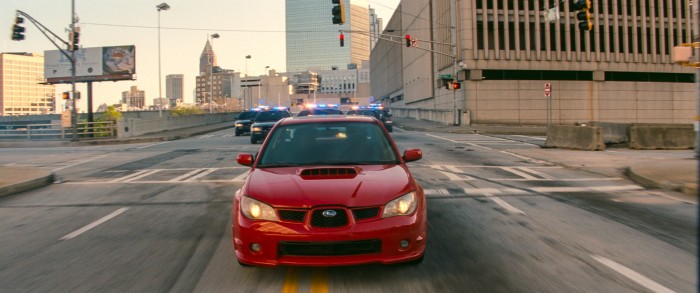
Practical Magic
Given that Baby's specialty is getaway driving, it shouldn't come as a shock that Baby Driver is full of action. What might be surprising is just how much of it is practical. We were told on set that Baby Driver had just a single day of shooting on a green screen. For context, we were on set during day 34 out of 56.
SFX supervisor Mark Byers talked up the return to practical effects, saving some special praise for Mad Max: Fury Road:
It's a little bit of a throwback to how we always used to do it, right before all the CGI came in. That's kind of taken over a lot of these movies, where all we end up doing is some explosions and throwing some cars around and everything that actually makes that happen is all some sort of CG monster thing we don't really interact with – which is a different way to make a movie. But a lot of that's happened. Movies like Fury Road and some others that really got back to the basics of practical, physical effects with the actors is great. I love it.
Bernthal also waxed enthusiastic about the practical effects of Baby Driver. "I think it just provides so much more opportunity to explore, to create," he said – though he was quick to add, "not to take away from digital effects artists, because they're artists in their own right."
As for how much of the stunt work the actors got to do themselves ... well, it depended on the actor. "I don't think they care much about me around here," Bernthal joked. "They sort of throw me into the car." Hamm, on the other hand, admitted that he preferred to let someone else handle the stunts. "I try to do as little as possible because I'm 45 years old and I break easily," he said.
Meanwhile, Elgort was just happy they'd finally let him take the wheel. "I was so glad I got to do some driving today," he said.
***
And now that we've talked about what exactly Baby Driver is and how it came to be, let's discuss what makes it so special. Click through for more on its soundtrack, its setting, and its surprising influences.
Finding the Beat
If the insistence on practical stunts makes Baby Driver unusual, its musical rhythm makes it totally unique. So is it a musical? Well ... "I mean, it is and it isn't," Wright told us:
It's not like a film where anybody sings out loud, but it's taking things that are in Scorsese or Tarantino or Soderbergh films, and in those films you have the jukebox kind of soundtrack and the idea with this is that the lead character is actually playing those songs. So the songs are always sourced, they're either in his ears or playing in a diner or playing on a stereo, so they're always within the scenes. So that's the premise of it, really.
While there might not be much in the way of actual singing and dancing, Baby Driver is meticulously choreographed to the beat of Baby's soundtrack, down to swish-swish of his windshield wipers or the click-clack of shoes on pavement or the rat-a-tat of gunfire. "We did this whole big sequence based on the song 'Tequila' with shooting guns, which was crazy," gushed González.
Though the filmmakers wouldn't say much about the specific songs on the soundtrack, Hamm teased a wildly varied selection.
Edgar's crazy encyclopedic knowledge of film is only matched by his crazy encyclopedic knowledge of music, and he has this really cool offbeat interesting playlist and sense of music that fits with all this stuff. It's incredibly eclectic, it's bands that you might've heard of or musicians you might've heard of, but it's deep cuts of their stuff.
... It's all very specific and interesting and it works incredibly well with this weird tone of this movie. It definitely sets its own world, and again, it's all kind of from the aural POV of this one savant character.
As a musician himself, Flea told us, he could relate. "I'm much better at playing music than I am at relating to human beings," he said. "So, it's kind of a neurosis, but it's also a real beautiful way for like music being sort of a divine voice, for it to be a channel to relate to the world."
Welcome to Atlanta
During our trip to the set, we got to watch as Wright and his cast and crew shot on an Atlanta highway. The heist crew hijacked a red Saturn from a young mother with her baby, and Baby took the wheel as Bats, Eddie, and JD piled in around him. (Don't worry about the baby. It ended the scene unharmed, and even got to play with Elgort between takes.)
What was notable about the scene was that Baby Driver wasn't really trying to hide the fact that it was shooting in Atlanta – because unlike so many other movies filmed in Atlanta, it actually takes place in Atlanta.
But that wasn't always meant to be the case. Producer Nira Park revealed to us that originally, the film was to be set in Los Angeles, and then New Orleans. But once they looked at Atlanta, Wright decided to rewrite the script for the new setting, and it all started to click. "There are elements of the story that make a lot of sense here in terms of the music scene and the love of cars," he said. "I've never seen a city with more muscle cars in my life ... and the crime."
The setting informed the look of the film, down to the costumes. Bats (Foxx), in particular, was dressed to reflect local style. "Almost everything he wears is from here, are things I've seen people on the streets wear," said costume designer Hoffman. "It's so bold, and then you see Jamie in bright red in every scene and it is one of the most gratifying visuals of the film."
While Baby Driver might look like Atlanta, though, you shouldn't necessarily expect it to sound like Atlanta. At least not most of the time. "The one track I couldn't clear was an Atlanta track," confessed Wright. "The track I wanted to use, they hadn't cleared one of their samples. We'll see, there will be something."
Costumes Make the Man (or Woman)
With his signature head-to-toe red looks, Bats is probably the flashiest-looking character in the ensemble. But just as much thought went into the subtler costumes. Baby's classic look, for instance is meant to reflect that he "lives in this '50s fantasy" – think "Gene Kelly of the coffee run," as Hoffman put it. And he's in black and white to show that "he's experiencing this world in a sort of a black-and-white way," said Hoffman.
The characters around him are much more colorful. Darling (González) is all ultra-feminine pinks and purples – she'll show up to the job in stiletto heels and a lilac fur, machine gun in hand. Her partner in (literal) crime, Buddy (Hamm) complements her in shades of blue. And Doc (Spacey) favors a "Michael Caine in the '60s" aesthetic done in chilly grays and browns.
Meanwhile, Baby's love, Deborah (James) dons an old-fashioned waitress uniform which makes her look like his "ideal '50s fantasy girl" – but adds a bit of her own personality with a pair of beat-up boots. And just about everyone, particularly in the crime world, is covered in tattoos. "I've never seen so many tattoos on a movie," said Hoffman. You might want to keep an eye out for them when they appear: "There are some really funny jokes with the tattoos," teased Hoffman.
If all of this seems a bit cartoonish, that's kind of the idea. "I think that the biggest thing for me about Edgar's films is there's almost a two-dimensional aspect to the aesthetic where it feels like a comic book or it feels like a video game," Hoffman told us. "I think it's important to keep that."
All Roads Lead to Baby Driver
Of course, Baby Driver's inspirations didn't stop at comic books. Speaking to us on set, Wright divulged that "things from when I was growing up" helped influence the movie:
Obviously Scorsese or Tarantino's films, but a big influence on me are Walter Hill's movies. Walter Hill's early movies like The Driver and The Warriors. I love those movies and I liked his style. Walter is somebody else that I've got to know through doing Q&As so I've made him fully aware. I've said 'You know I'm totally ripping you off, right? We'll call it a big tribute to you.' So I think a lot of those films, that would be a big influence, The Driver. Which, if you've never seen it, is really great.
And then there were the real-life references. Wright did his homework, talking to "ex-cons and real getaway drivers and FBI people and stuff" to inform his script. He found one source particularly helpful:
I met this guy who's amazing, an ex-convict who is now a writer called Joe Loya, who wrote a book called The Man Who Outgrew His Prison Cell, and I found him through a researcher and we became friendly. So when I would write pages I would sometimes sent them to him and say 'Does this sound kind of real?' I'm real aware of being English and middle class and writing an American crime film, so I may as well get the okay from someone who has been inside for ten years.
The one thing that didn't really influence Baby Driver, though? The Simon & Garfunkel tune it's named after. Wright denied any connection between them. "No, I just really like the song," he said. "It's not inspired in terms of, the lyrics of that song don't really have anything to do with the movie. But that song and that album, I used to love a lot as a kid."

